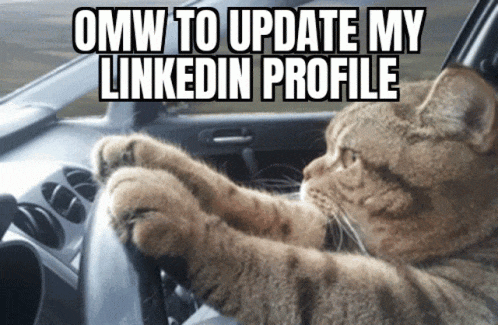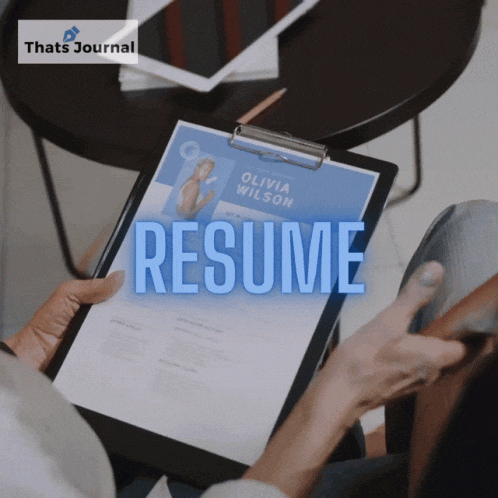2024 Guide: Mastering the 4 Key Steps to Land a Tech Job
LinkedIn profile optimization, Portfolio, Tailoring resume, Networking, and how people with a non-tech background can do it too!
In this guide, we'll dive into the fundamental steps necessary to land a job in tech.
Beginning with optimizing your LinkedIn profile to create a compelling digital presence
Moving onto crafting a robust portfolio to showcase your capabilities
Perfecting your resume tailored to tech roles
And strategically networking within the industry
Additionally, we explore invaluable insights on networking strategies for those without a background in tech, emphasizing the importance of transferable skills, educational opportunities, participation in tech-related activities, leveraging unique experiences, seeking mentorship, and showcasing genuine enthusiasm for technology.
Step 1: Optimize Your LinkedIn Profile 💼

Your LinkedIn profile is your gateway to networking with recruiters and hiring managers. According to experienced tech professionals, utilizing LinkedIn effectively significantly increases your chances of getting noticed. Here are essential strategies to maximize your LinkedIn profile:
Eliminate "Aspiring": Remove the term "aspiring" from your profile. Hiring managers don't search for "aspiring developers." Highlight your actual skills like "Web Developer" or "Software Developer."
Keyword Optimization: Incorporate key programming languages and technologies relevant to your desired job. Be concise, listing two to three essential keywords, e.g., React, Angular, Java.
Conciseness Wins: Keep your 'About Me' section brief yet impactful. Focus on quantifiable achievements rather than generic statements. Emphasize your practical contributions, e.g., "Developed customer-facing applications, resulting in higher conversion rates."
Utilize the Featured Section: Leverage this often underutilized section to showcase your best work or projects. But avoid replicating your resume here; rather, pique their interest, leaving room for further inquiry.
Extra tips 💡
1. Leverage Multimedia Elements:
Enhance your profile with multimedia content. Include videos, presentations, or documents that showcase your skills, achievements, or projects relevant to the interview. Adding visual or interactive elements can significantly enhance your profile's appeal and provide a deeper insight into your expertise.
2. Engage with Rich Content:
Create and share articles, posts, or industry-related content on LinkedIn. Share your thoughts, insights, or reflections on the interview process or the company you interviewed with. Regularly engaging in such content not only reinforces your expertise but also keeps your profile active and visible to your connections.
3. Personalize Your LinkedIn URL:
Customize your LinkedIn profile URL to something professional and easy to remember. A clean URL with your name makes it simpler for others to find you and is more visually appealing when shared on resumes or business cards.
4. Highlight Recommendations and Endorsements:
If you've received recommendations or endorsements related to your skills or work ethic, ensure they are visible on your profile. These authentic testimonials add credibility and reinforce your professional strengths.
5. Participate in Groups and Discussions:
Engage in industry-specific groups and discussions. Contribute meaningfully, ask insightful questions, and share your expertise. Active participation in relevant groups not only expands your network but also showcases your knowledge and interest in the field.
6. Regularly Update Your Profile:
Keep your profile updated with your latest achievements, projects, or skills. Any new certifications, awards, or skills acquired after the interview should be promptly added. An updated profile ensures that your LinkedIn accurately reflects your current expertise and professional growth.
7. Utilize LinkedIn Analytics:
Leverage LinkedIn's analytics tools to track profile views, post engagements, and the effectiveness of your content. This data can provide valuable insights into what resonates with your audience and helps refine your profile strategy further.
8. Connect with Interviewers:
After the interview, consider connecting with the interviewers on LinkedIn. Personalize your connection request with a brief note expressing your gratitude for the opportunity to interview and your enthusiasm about the company or role. This can reinforce your interest in the position.
Applying these strategies can significantly bolster your LinkedIn profile after an interview, making it a compelling and comprehensive representation of your professional brand and expertise.
Step 2: Create a Robust Portfolio 🧑💻

A portfolio site is a game-changer. It's the platform where you exhibit your best work, thereby guiding potential employers toward your finest projects. Here's how to maximize your portfolio:
Quality Over Quantity: Focus on quality projects that demonstrate your skills effectively. Address real-world problems and showcase your problem-solving abilities.
Present Case Studies: Accompany your projects with detailed case studies or written explanations. This showcases your analytical thinking and problem-solving process, setting you apart from others.
Extra tips 💡
Highlight Achievements and Impact:
When showcasing portfolio pieces, emphasize the impact of your work. Describe the specific challenges you encountered, the actions you took, and the measurable outcomes achieved. Use quantitative data or key performance indicators to substantiate your achievements. Highlighting the value you contributed in previous roles or projects reinforces your potential value to the prospective employer.
Client Testimonials or Endorsements:
If applicable, incorporate client testimonials, endorsements, or feedback received on previous projects into your portfolio. Positive endorsements serve as powerful validations of your skills and professionalism. Include quotes or reviews from clients, colleagues, or supervisors that highlight your strengths and contributions, reinforcing your credibility and reliability.
Regularly Update and Refresh Portfolio Content:
Post-interview, ensure your portfolio remains updated and relevant. Add new projects, achievements, or certifications acquired since the interview. Regularly refresh content to showcase your most recent work and keep your portfolio aligned with current industry standards and trends. This proactive approach demonstrates your commitment to ongoing professional development and growth.
Step 3: Perfect Your Resume 📃

Your resume remains a crucial component in the job hunt. It should align with the job description and effectively address the employer's requirements:
Customize for Each Job: Tailor your resume to mirror the job description's needs. Highlight experiences and skills relevant to the specific role.
Address Concerns Directly: Ensure your resume responds to the employer's stated requirements. Failing to address these may result in your resume being overlooked.
Extra tips 💡
Utilize Keywords and Achievements:
As mentioned in the 1st step, incorporating industry-specific keywords and highlighting key achievements within your resume is essential. Utilize keywords present in the job description to optimize your resume for Applicant Tracking Systems (ATS). Moreover, emphasize accomplishments rather than just listing job responsibilities. Quantify achievements where possible, showcasing tangible results to demonstrate your impact in previous roles.
Structure and Formatting for Readability:
The layout and formatting of your resume play a significant role. Ensure a clean, organized structure with clear headings, bullet points, and appropriate spacing. Use a professional font and maintain consistency throughout the document. A visually appealing and easy-to-read resume enhances readability, enabling recruiters to quickly identify your qualifications.
Highlight Continuing Education and Skills Development:
Showcasing ongoing education, certifications, or skill development initiatives on your resume can be influential. Whether it's completing online courses, attending workshops, or obtaining certifications, highlighting these demonstrates your commitment to staying updated in your field. It indicates adaptability and a proactive approach to professional growth, which can be highly appealing to potential employers.
Proofread and Seek Feedback:
Proofreading your resume and seeking feedback from peers or mentors is crucial. Eliminate any typos, grammatical errors, or inconsistencies. Additionally, receiving constructive feedback from others can provide valuable insights and perspectives, ensuring your resume is polished and effectively represents your qualifications and experiences.
Step 4: Strategic Networking 👯

Networking plays a pivotal role in the job search process. Effective networking involves engaging with professionals and potential employers:
Coffee Chats & Short Conversations: Engage in brief yet impactful conversations with professionals. Ten-minute conversations have proven to be effective in establishing initial connections.
Leverage Virtual Platforms: Engage with professionals through comments and discussions on platforms like LinkedIn. Authentic engagement can lead to substantial networking opportunities.
Extra tips 💡
Attend Industry Events and Conferences:
Attending industry-specific events, conferences, or seminars offers an excellent opportunity for networking (yes, even if you're shy!). These gatherings provide a platform to meet like-minded professionals, experts in your field, and potential employers. Engaging in conversations and exchanging ideas in such environments can foster meaningful connections that may lead to new career prospects or collaborations.
Utilize Alumni Networks and Professional Associations:
Tapping into alumni networks and professional associations can significantly broaden your networking scope. Reconnecting with former classmates, colleagues, or fellow alumni can yield unexpected opportunities. Additionally, becoming involved in relevant professional associations allows you to interact with individuals who share common interests and goals, facilitating networking and potential mentorship opportunities.
Follow-Up and Nurture Relationships:
Maintaining and nurturing professional relationships is vital. After initial interactions, follow up with a personalized message expressing gratitude and interest in staying connected. Engage with your connections periodically by sharing relevant content, congratulating them on milestones, or offering assistance. Consistent and genuine engagement helps solidify relationships, making your network more impactful over time.
Offer Help and Support to Your Network:
Being helpful and supportive within your network can significantly strengthen relationships. Offer assistance, share valuable resources, or provide advice whenever possible without expecting immediate returns. Being a resourceful and supportive connection can lead to reciprocity, enhancing the strength and value of your network.
Networking Without a Background in Tech 💻

Networking without a tech background is possible. Here is what you can do:
Coffee Chats & Meetups: Engage in coffee chats or attend networking events. Both virtual and in-person events can lead to valuable connections.
Engagement Through Comments: Authentic engagement via comments on platforms like LinkedIn can lead to valuable connections and networking opportunities.
Emphasize Transferable Skills and Adaptability:
Soft skills like problem-solving, communication, project management, and critical thinking are universally valuable and sought after in the tech sector. Emphasize these skills when networking, showcasing how they can be applied effectively in tech roles and adapted to the industry's demands.
Seek Educational Opportunities and Upskilling Programs:
Building upon our previous conversation, considering educational opportunities or upskilling programs can aid in networking for those without a tech background. Enrolling in relevant courses, workshops, or certifications can bridge the knowledge gap and provide common ground for networking within the tech community. Demonstrating a commitment to learning and staying updated on industry trends enhances credibility when engaging with tech professionals.
Participate in Tech-Adjacent Activities:
Attending tech meetups, hackathons, or industry-related workshops can provide exposure and networking prospects. Engaging in these activities helps in building familiarity with tech jargon, trends, and networking with individuals who may offer guidance or connections within the industry.
Demonstrate Passion and Curiosity for Tech:
Demonstrating a genuine passion and curiosity for technology is crucial. Expressing interest in tech trends, innovations, or discussing how technology impacts various industries showcases enthusiasm and eagerness to immerse oneself in the tech world. Such enthusiasm can be contagious and appealing when networking with tech professionals.
Conclusion
Landing a job in the tech industry is a combination of showcasing your skills, effective communication, and strategic networking. Implementing these four key steps, along with proactive networking strategies, significantly enhances your chances of standing out in the competitive tech job market.
👋 Hello, I'm Eleftheria, Community Manager, developer, public speaker, and content creator.
🥰 If you liked this article, consider sharing it.